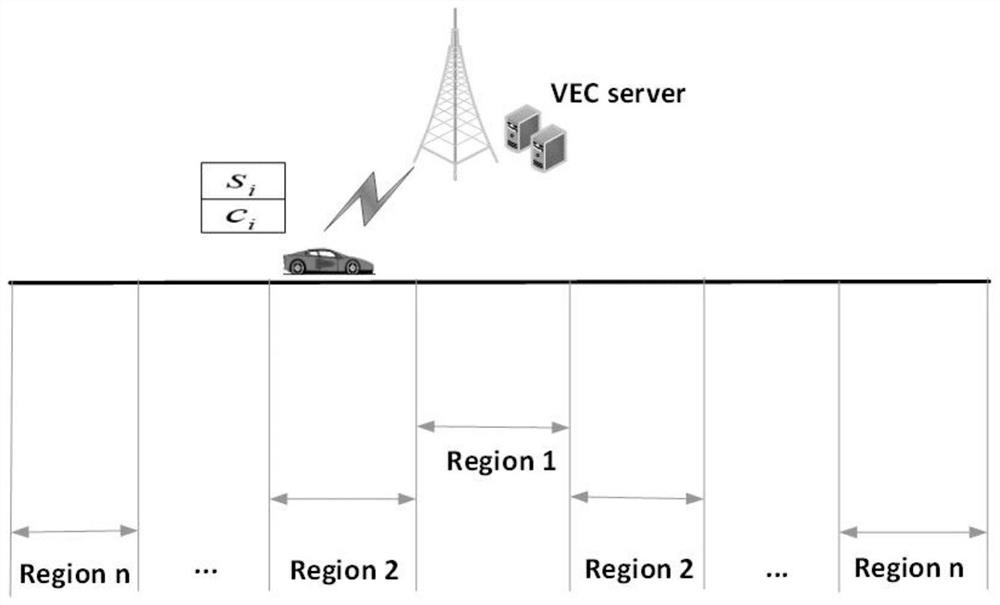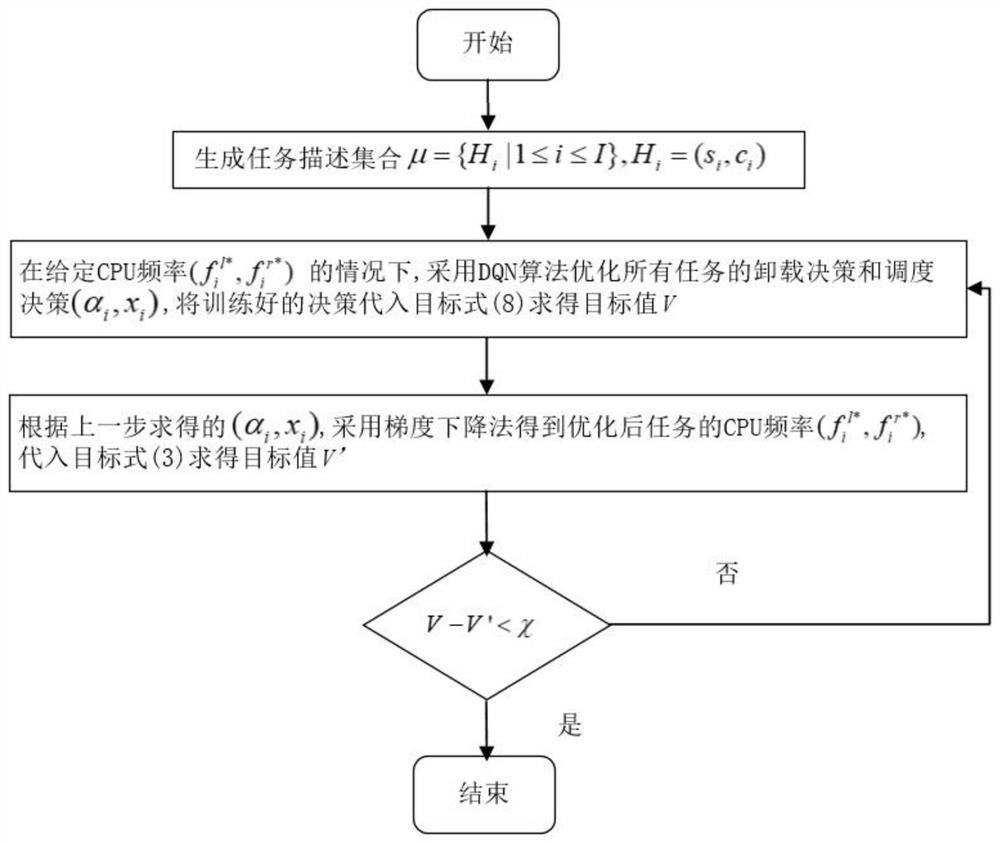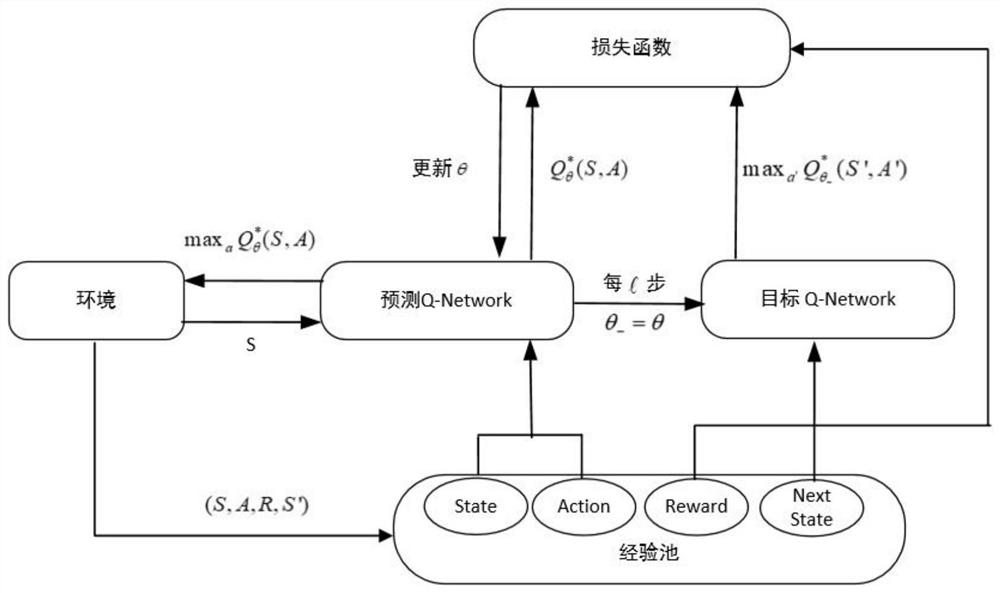Vehicle-side collaborative task unloading scheduling and resource allocation method in Internet of Vehicles
A technology of resource allocation and Internet of Vehicles, which is applied in the field of task offload scheduling and resource allocation of vehicle-side collaboration in the Internet of Vehicles, which can solve problems such as insufficiency and limited edge processing capabilities, and achieve the effect of reducing equipment energy consumption and improving user experience.
- Summary
- Abstract
- Description
- Claims
- Application Information
AI Technical Summary
Problems solved by technology
Method used
Image
Examples
Embodiment 1
[0115] In this example, figure 1 Shown is a schematic diagram of a vehicle edge computing scenario model, which includes an RSU equipped with an edge server, a single vehicle user, and one task on the vehicle. The set of design computing tasks is τ={H 1 ,H 2 ,H 3 ,H 4 ,H 5 ,H 6 ,H 7 ,H 8 ,H 9 ,H 10}, I=10. Each task H i The amount of data to be processed is s i , each task H i The number of CPU cycles required to process each unit of data is c i . The vehicle's maximum CPU frequency is The transmission power of the vehicle is p l = 1w; the maximum CPU frequency of the edge server is Set the maximum completion time T of each task max =6s, the maximum execution energy consumption E max = 2 joules. During the driving process of the vehicle, the vehicle network channel is time-varying, which makes it impossible to accurately estimate the transmission delay. In order to estimate the transmission delay more accurately, this paper divides the road section into n...
PUM
 Login to View More
Login to View More Abstract
Description
Claims
Application Information
 Login to View More
Login to View More - R&D
- Intellectual Property
- Life Sciences
- Materials
- Tech Scout
- Unparalleled Data Quality
- Higher Quality Content
- 60% Fewer Hallucinations
Browse by: Latest US Patents, China's latest patents, Technical Efficacy Thesaurus, Application Domain, Technology Topic, Popular Technical Reports.
© 2025 PatSnap. All rights reserved.Legal|Privacy policy|Modern Slavery Act Transparency Statement|Sitemap|About US| Contact US: help@patsnap.com



